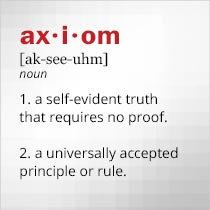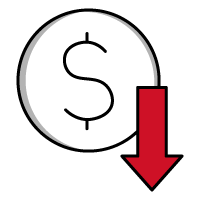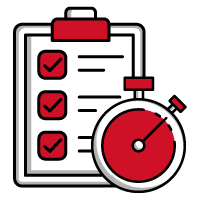Gauging Impedance with the Highest Accuracy
December 02, 2019
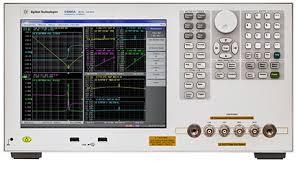 |
Impedance is one of the most essential of electrical parameters, providing insight into how alternating current (AC) flows through an electronic device, circuit, or system. It is frequency dependent, and measurements can be made across a wide range of frequencies, from audio (20 Hz to 20 kHz) through microwave frequencies. Depending upon frequency, those measurements are performed with different instruments, including LCR meters at the lowest frequencies and network analyzers at the highest frequencies, with impedance analyzers in between. Measurements of basic circuit parameters such as impedance (Z) and admittance (Y) are usually supported by analysis of other additional circuit parameters, such as capacitance (C), resistance (R), inductance (L) and, in some cases, material parameters, such as permittivity and permeability. Impedance analyzers from leading suppliers such as Keysight Technologies and Wayne Kerr Electronics can provide the measurement capabilities and accuracy to reliably perform impedance and other circuit parameter measurements, whether for research, maintenance, or the production line.
Measurements of impedance can tell a great deal about a circuit, semiconductor, or passive circuit element. Maintaining matched 50-Ω impedance can optimize the power transfer throughout a high-frequency circuit while, at lower frequencies, an 8-Ω match between an audio power amplifier and audio speakers at that impedance can minimize the loss of energy as heat. By using the proper instruments and accessories, impedance measurements can provide the information needed to track the causes of impedance mismatches and discontinuities within a circuit or system design.
Impedance measurements can be made with a precision voltage source and a voltmeter, although instruments such as LCR meters, impedance analyzers, and network analyzers are more commonly used, especially when circuit parameter information is needed at higher frequencies, through about 3 GHz. LCR meters provide high accuracy with ease of use but, somewhat like the voltmeter, are useful only at lower frequencies, and for measurements performed one frequency at a time. When impedance and other circuit parameters must be measured at higher frequencies and for a list of test frequencies or a band of test points swept up or down in frequency, an impedance analyzer or network analyzer provides an integrated test source that can be tuned to cover a desired test frequency range.
While LCR meters use a precision bridge to determine the impedance of a device under test (DUT), impedance analyzers and network analyzers each rely on current-voltage (I-V) analysis techniques to extract device and circuit impedance values. Because they use precision current sources to provide test signals, they can perform continuous measurements in list or swept-frequency modes and have the capability to perform in-circuit testing when an appropriate test probe is connected. LCR meters, which more typically are used for measurements on a single DUT, typically share the low-frequency measurement ranges of impedance analyzers (typically just over 100 MHz) whereas network analyzers can provide impedance and other circuit parameter measurements into the microwave frequency range (to about 3 GHz).
Characteristics to Consider
When considering the capabilities of different impedance measurement tools, such factors include impedance measurement range, frequency range, measurement accuracy, repeatability, measurement speed, and the number of different measurements an instrument can perform. Some performance parameters, such as accuracy, are quite complex, especially for impedance measurements, since impedance is a function of frequency and temperature. Typically, accuracy will decrease with increasing frequency, with an impedance analyzer operating at lower frequencies than a network analyzer but providing high measurement accuracy over its frequency range. In addition, the measurement accuracy will depend on the long-term stability of the test instrument and how recently and how well it was calibrated. Accuracy may also depend on the time spend on a measurement: measurement speed may be a function of the analyzer’s operating mode, such as whether it is performing measurements at a single frequency, in a list of frequencies, or sweeping across a range of frequencies.
For impedance and network analyzers, a user should consider the range of an analyzer’s AC drive voltage and bias current so that testing can be performed under real-world conditions. It should provide suitable connectors and enough terminals to meet the needs for test probes and fixtures for an application. For characterizing semiconductors and active components, such as amplifiers, an analyzer should provide DC bias voltage and current for the DUT. For modeling purposes, it should perform equivalent-circuit analysis as well as impedance measurements. To meet present needs, an analyzer should provide a suitable frequency range for required measurements. For future needs, a cost-effective measurement solution will include options to upgrade the instrument to higher frequency or even higher impedance measurement ranges.
An example of an upgradable impedance analyzer is the 6500B series of instruments from Wayne Kerr, which includes models with maximum frequencies of 5, 10, 15, 20, 30, and 120 MHz, with Wayne Kerr’s 65120B as the highest-frequency member of this group. All the instruments performance measurements of impedance along with many other basic circuit parameters, including capacitance, inductance, resistance, reactance, and quality factor (Q) with measurement accuracy as good as ±0.05%. Options include permittivity and permeability testing, built-in DC bias, and equivalent-circuit analysis in support of circuit modeling. By upgrading at any time, a user can convert a lower-frequency model to a higher-frequency range when test requirements change.
This choice of frequency is also available in different versions of the Keysight / Agilent E4990A impedance analyzer, with units having frequency ranges of 20 Hz to 10, 20, 30, 50, and 120 MHz with typical measurement accuracy of ±0.045%. In addition to measurements of impedance and many other circuit parameters, these analyzers are available with options for material measurements of permittivity and permeability. When higher-frequency impedance measurements are required, although with somewhat less accuracy, the E4991A network analyzer from Keysight Technologies features a frequency range of 1 MHz to 3 GHz and an impedance measurement range of 130 mΩ to 20 MΩ (at 1 MHz). Its basic accuracy is ±0.65%. As with the lower-frequency impedance analyzers, available options include material parameter measurements and a built-in ±40-V DC bias source for active device measurements.
For those looking to combine impedance parameter analysis with basic network analysis, the Keysight / Agilent E5061B with options 3L5/005 (required for low-frequency impedance testing) is a network analyzer which performs network analysis and impedance analysis with 2% basic accuracy from 5 Hz to 3 GHz. As with the other analyzers, a built-in ±40-V DC bias source is available as an option. And for those in need of basic AC impedance and circuit parameter measurements, the Keysight / Agilent E4980A is a precision LCR meter that operates from 20 Hz to 2 MHz with basic measurement accuracy of ±0.01%.
To rent or purchase these or other test instruments, please visit Axiom’s website at www.axiomtest.com to view our inventory. If you would like help selecting the right equipment for your project, contact Axiom Test Equipment’s sales department at sales@axiomtest.com, or by calling an Axiom Test Equipment sales representative at 760-806-6600.
Back to BLOG


